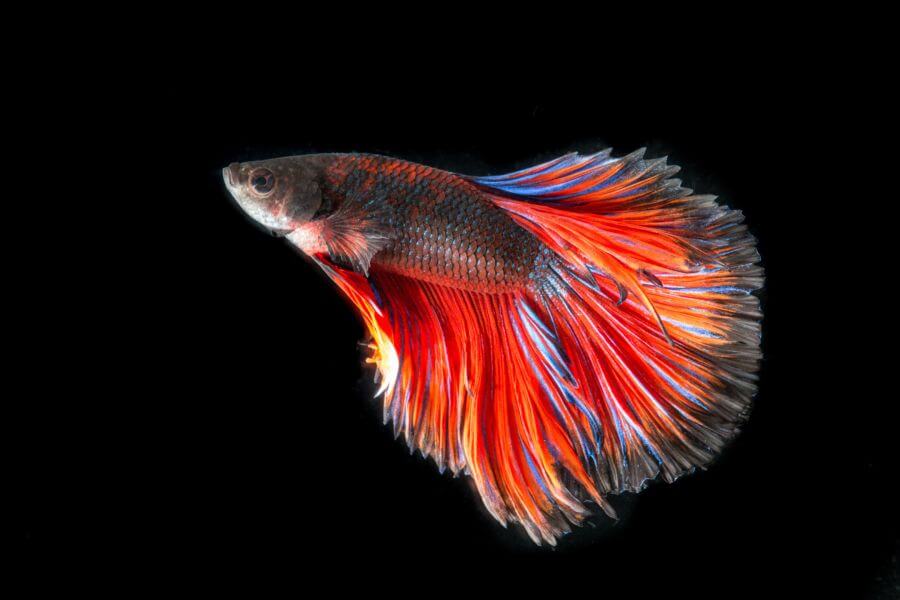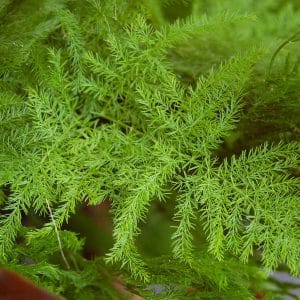Keeping Siamese fighting fish
DIY and how-to

The Origin of Siamese Fighting Fish
Siamese Fighting Fish (also known as Bettas) originated in the shallow waters of Thailand (formerly called Siam, hence their name), Indonesia, Malaysia, Vietnam and parts of China. These areas contain acres of rice paddies, ponds, slow moving streams and swamps, all of which are home to Siamese Fighting Fish (Bettas). Today Siamese Fighting Fish (Bettas), have been introduced in many locations, giving rise to non-native populations in a number of countries.
The common name, Siamese Fighting Fish, was coined due to the practice of organised fights between males, much like cock fights. These matches continue to this day, driven by the income from betting. In some locations males are bred specifically for aggression, to ensure better fights.
How would you describe Siamese Fighting Fish?
The brilliant colours and long flowing fins of the male Siamese Fighting Fish (Bettas), make it one of the most well known aquarium fish. Females are usually not as highly coloured, and have much shorter fins. Captive breeding programs have resulted in a wide variety of colours, including white, yellow, orange, red, pink, blue, green, turquoise, brown and black. Fin types have also changed due to selective breeding. Veil tails have been joined by Crowntails, Deltas, Fans, Halfmoons, Lyre and Split tails, to name a few.
Both sexes have a torpedo-shaped body and an upturned mouth geared for eating at the surface. Mature adults reach a size of 5-8 cm, with females being slightly smaller than the males. A unique feature of this species is the presence of an organ that allows them to take oxygen from the atmosphere instead of water, thus allowing them to survive in low-oxygen waters.
What are good tank mates for Siamese Fighting Fish?
Males cannot be kept with together, unless there are separators in the tank. Multiple females can generally be kept together without problems, and a single male can also be added to the mix. They can be kept with other peaceful species of fish, as long as they are small and are not fin-nipping types, such as Tiger Barbs. Male Siamese Fighting Fish (Bettas), should not be kept with other fish that have similar body types and long fins, as they could mistake them for rivals.
How do you care for Siamese Fighting Fish?
The home countries of the Siamese Fighting Fish (Bettas),are tropical, which means the water temperature is quite warm. Siamese Fighting Fish (Bettas), thrive on heat, and will become increasingly listless when the water temperature falls below 24 degrees C. Water temperature is perhaps the biggest argument against keeping a Siamese Fighting Fish (Bettas), in a tiny bowl, which cannot readily be heat controlled.
Optimally the water for keeping healthy Siamese Fighting Fish (Bettas), should be soft, warm, with a neutral to slightly acidic pH. Water movement should be kept to a minimum, which means that power filters and power heads are not suitable.
What is the diet of Siamese Fighting Fish?
In nature Siamese Fighting Fish (Bettas), subsist almost exclusively on insects and insect larvae. They are built with an upturned mouth that is well suited to snatching any hapless insect that might fall into the water. Internally their digestive system is geared for meat, having a much shorter alimentary track than vegetarian fish. For this reason, live foods are the ideal diet for the Siamese Fighting Fish (Bettas), however they will adapt to eating flake foods and frozen and freeze-dried foods.
Brine shrimp, daphnia, plankton, tubifex, glassworms, and beef heart are all excellent options that are available frozen or freeze dried. If flake food is fed, it should be supplemented with frozen and freeze-dried foods, and if possible live foods.
How do you breed Siamese Fighting Fish?
Siamese Fighting Fish (Bettas), have a fairly short lifespan, and are most successful as breeders when they under a year old. They breed in bubble nests and do not require a large tank or special equipment. The male will blow an elaborate bubble nest when he is ready to spawn. The female should be provided with a hiding place, as males may become aggressive during courtship.
When they are ready to spawn, the pair will begin circling each other under the bubble nest. The male will wrap himself around the female who has turned on her back. As she expels the eggs, they are fertilised and begin to sink. The male will scoop up the eggs and spit them into the nest. From this point on the male will tend the brood. It is advisable to remove the female, as the male may become aggressive towards her as he tends his young.
In one to two days the eggs will hatch, and the fry will be visible hanging in the bubble nest with their tails pointing downward. They will feed off their yolk sack for another 36 hours, during which time the male will pick up any fry that fall out of the nest. The male should be removed within two days after the fry hatch, as they may eat the young once they are free swimming.
The fry should be fed a couple of feedings daily of baby brine shrimp or very fine baby food. Tetra makes a dry mixture specifically for egg-laying fish, and many pet shops carry frozen baby brine shrimp. Take care not to overfeed, as the uneaten food will foul the water and can quickly prove lethal to the fry.
You might also like
Shop online
-
- Sale!
TIRZA RUBIN POT COVER
- Original price was: R139.99.R97.99Current price is: R97.99.
- Add to cart Learn More
-
- Sale!
MED ADULT 15KG
- Original price was: R1,599.99.R1,279.99Current price is: R1,279.99.
- Add to cart Learn More




